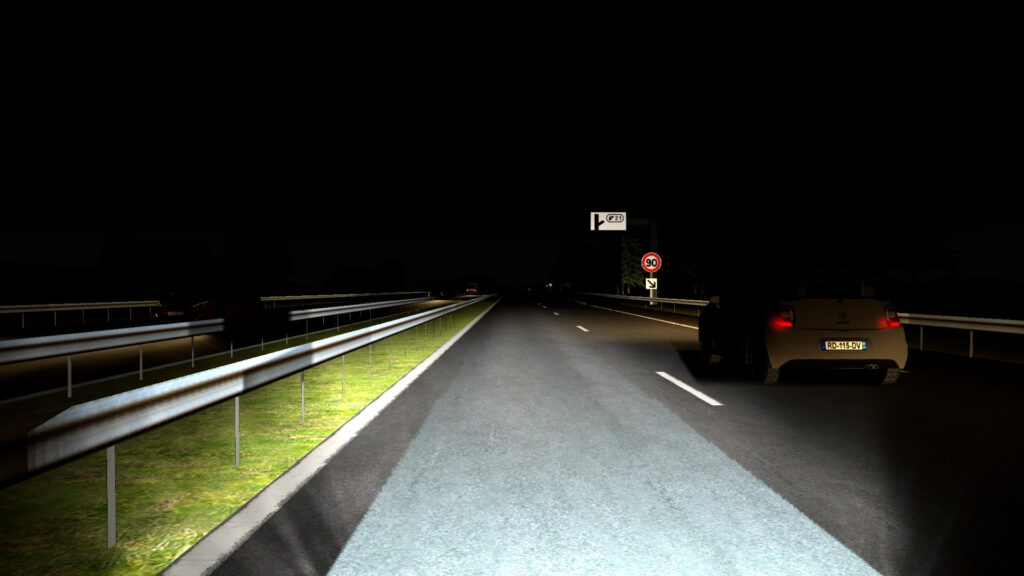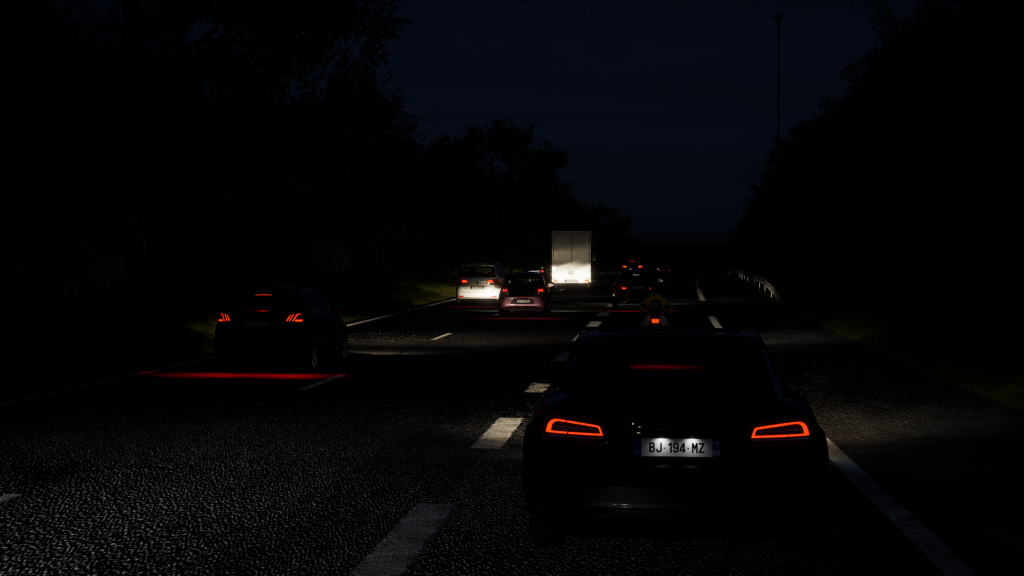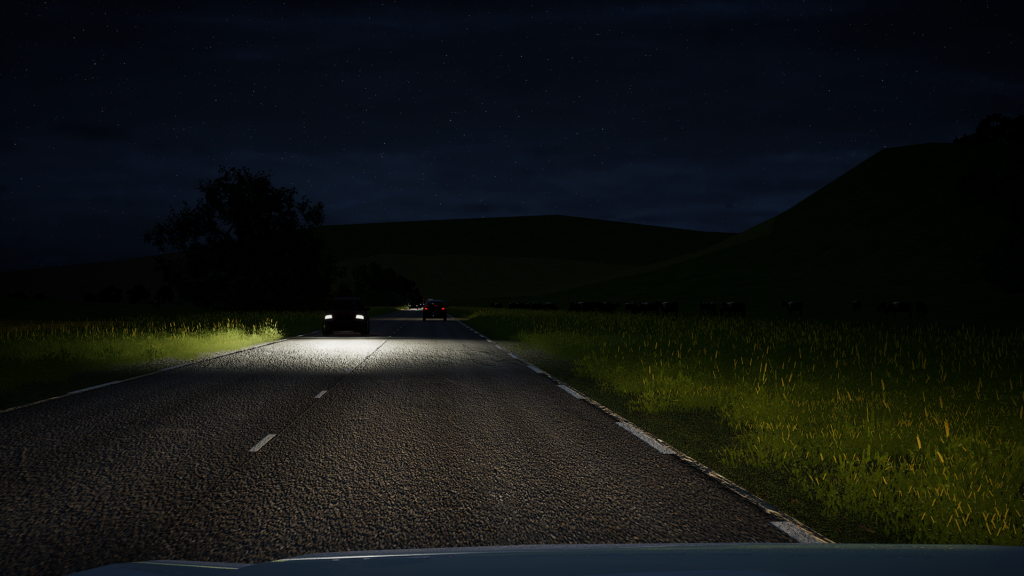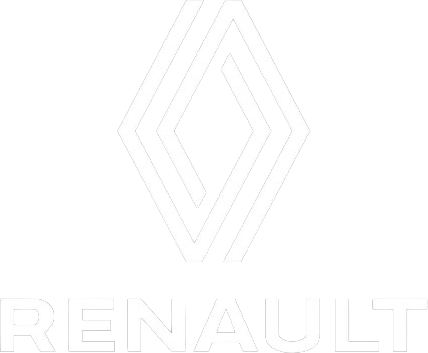Smart projectors development
Smart projectors development represents a significant advancement in automotive lighting technology, offering innovative features such as adaptive lighting patterns, pixel lighting and intelligent beam control. Simulations must accurately model the behavior of smart headlight components, such as light-emitting diodes (LEDs), sensors, and control algorithms, to optimize performance and ensure seamless operation. By simulating these factors comprehensively with SCANeR, engineers can refine smart projector designs, enhance visibility, and improve overall driver safety and comfort.
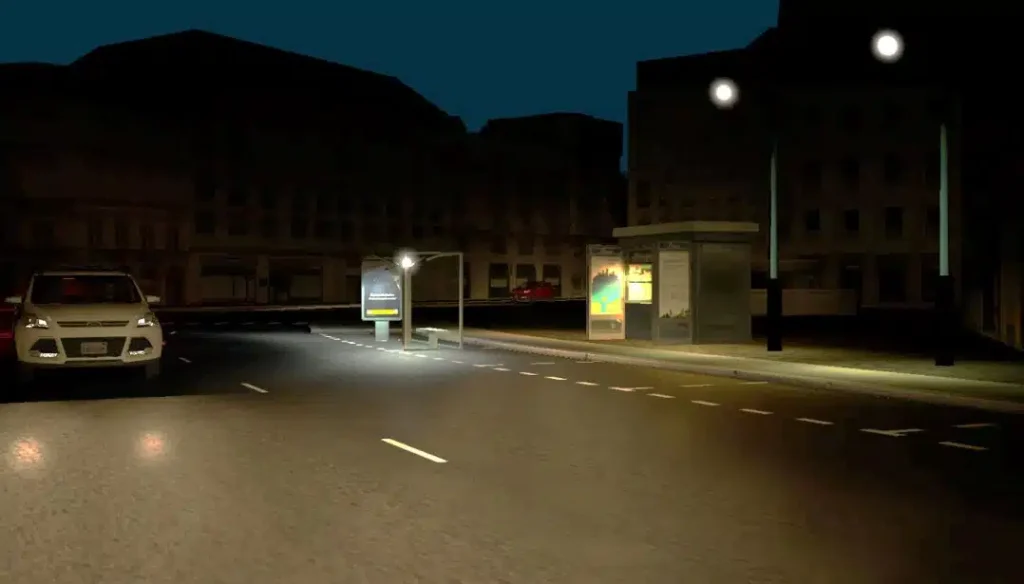
Benefits of SCANeR
- SCANeR is able to run the control law in co-simulation for development testing purposes
- SCANeR offers the possibility to compile several control laws in parallel (one for each projector type) for projector validation using predefined scenarios
- Regarding the matrix beam, SCANeR provides an individual control of each LED
- SCANeR allows the handling of large amount of light sources
Lighting standards validation
With SCANeR, engineers can simulate various lighting scenarios, such as beam patterns, intensity levels, and color temperatures, to verify compliance with industry standards and regulations. This comprehensive evaluation includes analyzing light distribution, glare control, and adaptive functionalities to ensure adherence to safety standards while optimizing visibility for drivers and pedestrians. By providing a virtual testing environment, SCANeR accelerates validation processes, reduces costs, and ensures the development of lighting solutions that meet stringent regulatory requirements.

Benefits of SCANeR
- SCANeR provides a static photometric analysis tool
- Possibility to design a complete headlight configuration with an accurate positioning of light sources
- Set of tools provided in order to help the engineer with the analysis: Isolux curves, aiming walls, illuminance sensors, etc.
Related packs
Validation of projector homogeneity and performance
Validating the homogeneity and performance of projectors is paramount for ensuring optimal visibility and safety on the road. SCANeR allows to replicate diverse lighting conditions, such as different road surfaces, weather conditions, and ambient lighting levels, thus, engineers can simulate the behavior of the headlight’s beam pattern, ensuring uniform light distribution across the road surface. Moreover, simulations assess glare control to minimize discomfort for other road users while optimizing visibility for the driver. By accurately simulating these factors, engineers can validate headlight performance effectively and ensure compliance with regulatory standards.

Benefits of SCANeR
- Possibility to design a complete headlight configuration with an accurate positioning of light sources
- Tools to calibrate the rendering engine accurately using white luminance temperature, different tone mapping methods and other parameters.
- Set of tools provided in order to help the engineer with the analysis: 3D Isolux curves, aiming walls, etc.
- With SCANeR it is possible to export a picture of the simulation highliting illuminance and luminance
Roadsign reflection
With SCANeR, engineers can accurately replicate the interaction between vehicle headlights and road signs to assess and mitigate glare effectively. By leveraging SCANeR’s advanced simulation capabilities, engineers can simulate various lighting conditions and sign placement scenarios to optimize visibility for drivers while minimizing distractions. SCANeR empowers automotive manufacturers to develop headlights that enhance nighttime driving conditions and improve overall road safety by effectively managing road sign reflection.

Benefits of SCANeR
- Possibility to assign BRDF to roadsigns
- SCANeR gives the opportunity to add glare and illuminance sensors
- With SCANeR it is possible to detect roadsigns as light sources and thus provide details such as their angular position, illuminance, luminance, reflected intensity, etc...
Related packs
Virtual driving
Virtual driving has emerged as a critical component of automotive development, offering engineers a safe and cost-effective means to test vehicle performance and behavior in diverse driving scenarios. With SCANeR, engineers can recreate real-world driving environments with unparalleled accuracy, allowing for comprehensive testing of vehicle dynamics, handling, and safety systems. By simulating various road conditions, traffic scenarios, and environmental factors, virtual driving enables engineers to identify potential issues, optimize vehicle designs, and expedite the development process, ultimately leading to the creation of safer and more reliable vehicles.

Benefits of SCANeR
- With SCANeR run real-time lighting tests with precision
- SCANeR’s user-friendly GUI enables lighting simulation to be carried any time of the day with any specific weather conditions
- SCANeR provides rich and representative environments thanks to its Unreal based rendering engine
- Possibility to connect SCANeR with physical cockpit
- SCANeR allows to compare different headlights configurations

